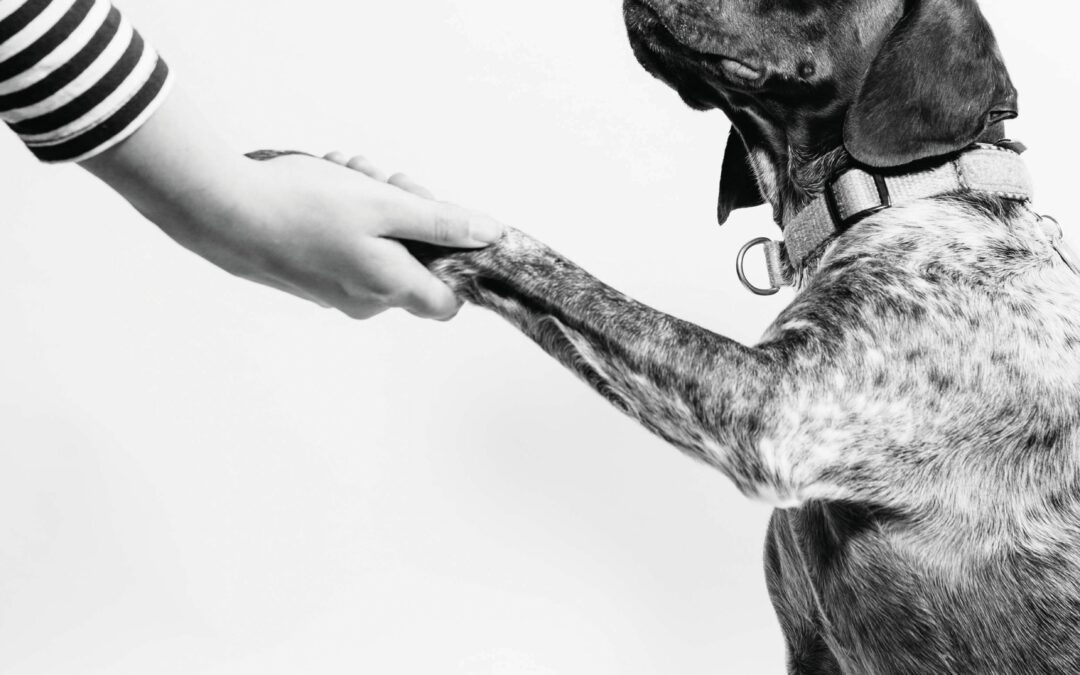I am seeing lots of dogs with handling issues. It is unclear why there is an apparent proliferation in dogs that resent being touched by owners, vets, or strangers, and which may aggress to avoid certain types of contact. There is no single explanation and factors may include poor breeding, early inappropriate handling, or undiagnosed physical issues. I can only advise all new puppy owners to gently accustom their pup to enjoy handling and to practice handling exercises daily.
For dogs with existing issues, teaching the touch cue may be one small way to begin to address the fear or dislike of human hands outstretched towards them. It gives the dog a degree of agency, because they choose to move towards your hand for contact instead of you moving into their space. Once established as a fun exercise, the duration of touch can be prolonged and then gradually extended to include other parts of the dog’s body.
Aside from being a first step to addressing handling issues, the touch exercise can also enhance recall and retrieving and is a useful way to switch your dog into thinking mode at times of stress or frustration. If your dog is anxious in certain situations using the touch cue may work better than simply offering treats or other reward. However, in order to be effective, the touch cue should first be trained under non-stressful conditions, to achieve fluency.
- Have treats ready and easy to access and keep these behind your back. First rub a bit of treat into the palm of your hand
- Present the open palm of your hand in front of your dog six inches to a foot from their nose
- Many dogs will move forward to sniff and bump their nose on your palm. On contact say ‘yes’ and reward with your other hand from the treats behind your back, now put the target hand behind your back.
- Wait a few seconds. Reset and repeat
- If your dog is wary, mark (‘yes’) and reward successive movements towards your palm, until she finally makes contact
- Initially scenting your palm with smelly food will increase the dog’s inclination to investigate, but try to move on to an unscented palm as soon as you can
- Practice in short sessions until your dog will touch your hand with her nose most of the time. At this point, start to say ‘touch’ just before you present your palm.
- For each training session aim to do 5 – 8 repetitions and try to end on a successful nose touch. Each dog will vary as to how quickly they respond.
- Initially, this exercise will be tiring for your dog as they are actively problem solving, trying to figure how to get the treat. Do not be surprised if after the first few successful attempts your dog suddenly looks bewildered and stops responding. This signals brain overload. Try again another time at an easier level, or just relax, take a break, and then offer your palm a bit closer to your dog’s nose and wait patiently. Don’t stare at your dog or talk to them, give them time to get back on track.
- Once your dog is responding well begin to practice the exercise at different times of the day and in different rooms.
- Start to use the cue when your dog is further away. Call her to you and then as she is near say ‘touch’ offering your palm. Once fluent, start to work in more distracting environments, around visitors, on lead, in the vet practice and in the park.
- Finally, always reward successful touches with a reward, including verbal praise, a treat or a game.
Leonie St Clair|www.londondogstraining.co.uk

